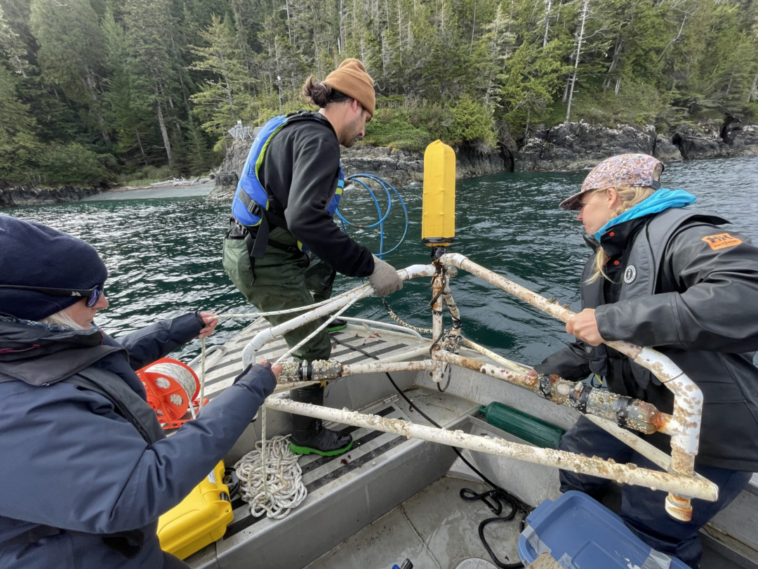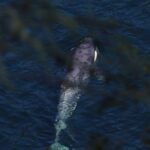A new initiative from Ocean Wise will use underwater microphones to help protect BC’s whales from deadly ship collisions. The conservation organization says its new alert system will be the first one ever that uses automatic detection from hydrophones to notify commercial vessels of nearby whales.
“By supplementing our community science-supplied sightings with hydrophone alerts that detect whale vocalizations in real time, we expect to be able to provide even more alerts to keep whales safe from ship strike and disturbance.”
Dr. Chloe Robinson, Director of the Ocean Wise Whales Initiative
When a whale sound is detected, their Whale Report Alert System (WRAS) will message mariners in the area, recommending they slow down, stop, or reroute to prevent any disturbance or accidents with the mammals. Hydrophones “dramatically improve whale detection capabilities in remote areas,” particularly when whales are submerged or visibility conditions are low due to weather or darkness, Ocean Wise said in a statement.
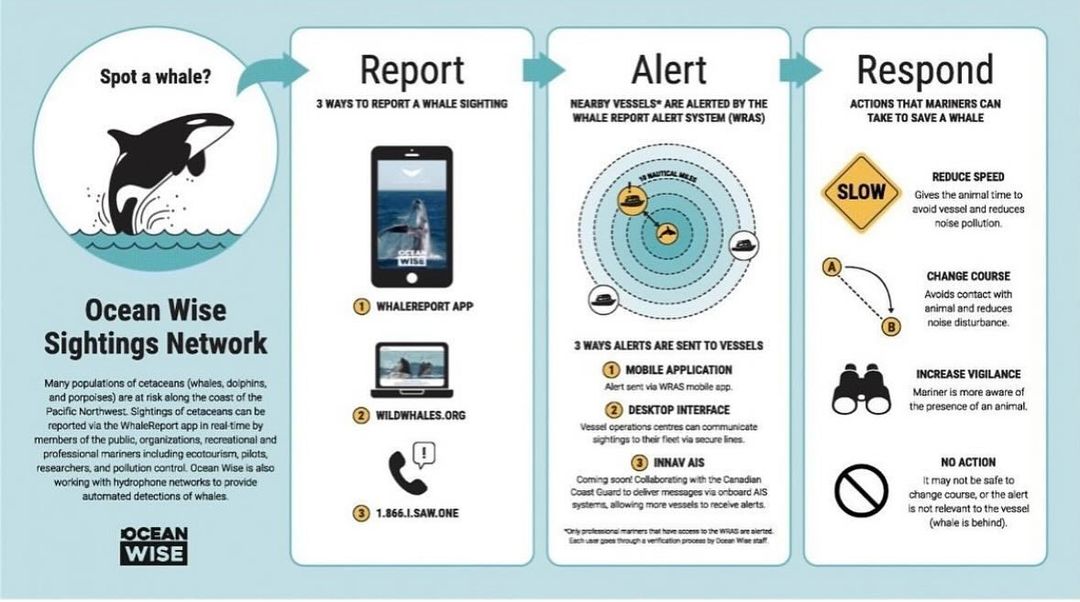
“This exciting new method of generating alerts for the Whale Report Alert System is a first,” said Dr. Chloe Robinson, Director of the Ocean Wise Whales Initiative, in the release. “By supplementing our community science-supplied sightings with hydrophone alerts that detect whale vocalizations in real time, we expect to be able to provide even more alerts to keep whales safe from ship strike and disturbance.”
Ocean Wise’s hydrophones are currently stationed at the Boundary Pass Underwater Listening Station, about 50 kilometres south of Vancouver, BC, at the border with Washington. The area is located just below a major shipping lane that coincides with a critical habitat for the endangered population of southern resident killer whales. The hydrophone arrays are placed 190 metres underwater, about 300 metres apart, and send the information to a shore station on Saturna Island via a 2.8-kilometre-long fibre-optic cable.
Ocean Wise also asks members of the public to contribute any whale sightings to its WhaleReport App, which it uses in combination with the WRAS data to prevent ship strikes on whales along BC’s coast.
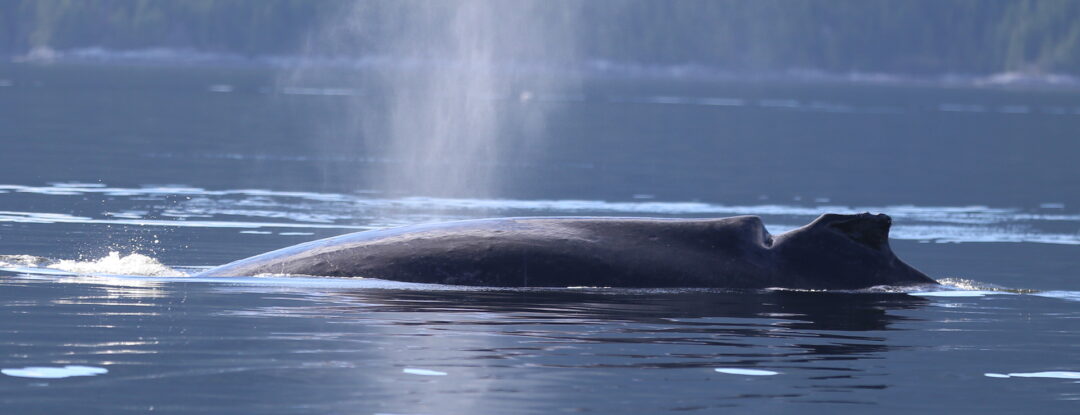
Increased Whale Strikes
BC is already seeing a growing number of harmful collisions of commercial vessels with coastal whales. Last summer, there were eleven boat strikes with humpback whales from BC Ferries and other large vessels, prompting calls from whale experts like Jackie Hildering for better mitigation measures to protect marine mammals.
The Skeena earlier reported on increasing vessel collisions with whales due to growing shipping traffic from energy exports in BC waters. A peer-reviewed paper published in Endangered Species Research stated that more commercial vessels as a result of the boom in Liquefied Natural Gas (LNG or fracked gas) exports on BC’s coast will most certainly result in higher rates of whale strikes and deaths.
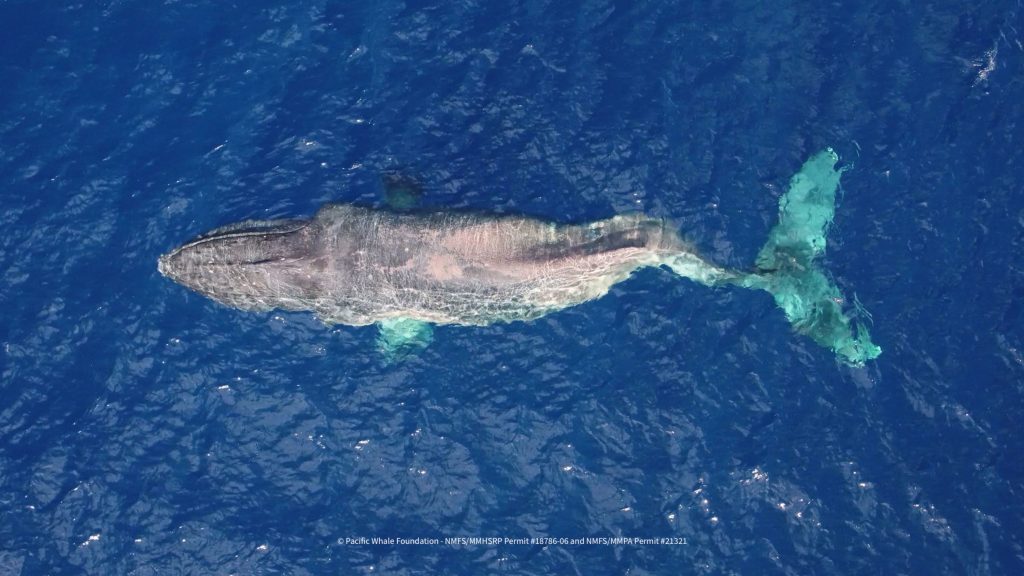
Their research focused on the impact of the massive $38 billion LNG Canada terminal outside Kitimat that will add 350 new ships (or 700 trips) passing through each year. Janie Wray, co-author of the paper and CEO of the marine research organization North Coast Cetacean Society, predicted a potential “nightmare” scenario in the region.
She and her research team calculated that by 2030, there could be 30 times more fatal collisions of whales and large vessels along the coastal route. For that region alone, they predicted two fin whales and 18 humpback whales could die each year due to ship strikes, a substantial increase from the current estimated figures of less than one fin whale and three to four humpback whale deaths annually.
“We have a lot of work to do in regards to how we behave around whales with boats.”
Janie Wray, CEO of North Coast Cetacean Society
A hydrophone initiative, similar to Ocean Wise’s WRAS, is collaboratively being undertaken by the Gitga’at First Nation, North Coast Cetacean Society (NCCS), and WWF Canada on Gitga’at territory. The program, called SWAG (Ships, Whales, & Acoustics in Gitga’at Territory) uses hydrophones to track whales to better understand how the marine mammals are responding to noise pollution and obstruction from local shipping traffic. The data collected by SWAG and Gitga’at Coastal Guardians was crucial in the LNG vessel strike study and its conclusions.
“We have a lot of work to do in regards to how we behave around whales with boats,” said Wray at the time, warning that without proactive mitigation measures, there would be “unsustainable losses” to already vulnerable whale populations.




